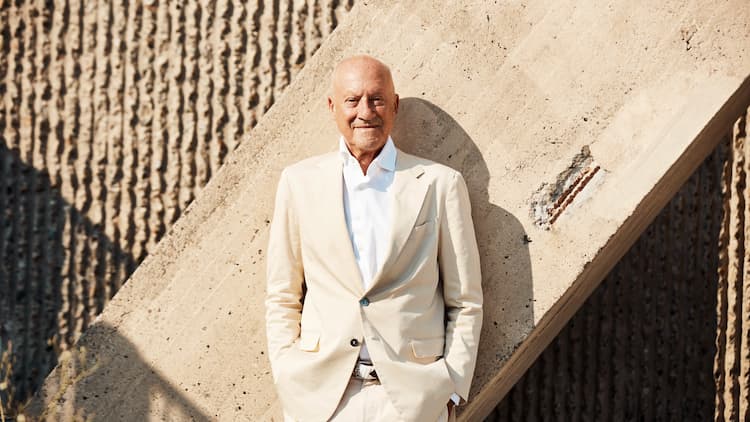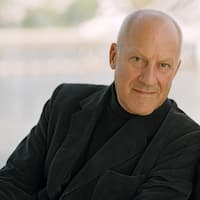Norman Foster Biography
Norman Foster is a designer and architect from England. Foster is widely regarded as a pivotal figure in British modernist architecture, having been closely associated with the development of high-tech architecture. His architectural firm, Foster + Partners, was founded in 1967 as Foster Associates and is the largest in the United Kingdom, with offices around the world.
How old is Norman Foster? – Age
He is 87 years old as of 1 June 2022. He was born in 1935 in Reddish, Stockport, United Kingdom. He was born as Norman Robert Foster.
Norman Foster Family
Foster was born two miles (3.2 kilometers) north of Stockport, which was then in Lancashire. Robert and Lilian Foster (née Smith) raised him as their only child. The family relocated to Levenshulme, near Manchester, and lived in poverty. Norman’s father worked as a machine painter at the Metropolitan-Vickers works in Trafford Park, which inspired him to pursue engineering, design, and, eventually, architecture. His mother worked at a nearby bakery. Foster’s parents were hard workers who frequently relied on neighbors and family members to care for their son, which Foster later believed limited his relationship with his mother and father.
Norman Foster Education
Foster went to Burnage Grammar School for Boys, where he was bullied by his classmates and began reading. He passed an entrance exam for a trainee scheme set up by Manchester Town Hall when he was 16 years old. He completed his national service in the Royal Air Force in 1953, having chosen the air force because aircraft had long been a hobby of his. Foster worked as an ice cream salesman, bouncer, and baker to fund his studies. He received a RIBA silver medal for a drawing of a windmill, which earned him a scholarship to Yale School of Architecture. Following his graduation in 1961, he traveled across the United States with partner Richard Rogers to earn his master’s degree.
Norman Foster Cancer
Foster was diagnosed with bowel cancer in the 2000s and was given only weeks to live. He received chemotherapy and recovered completely. He also had a heart attack.
Norman Foster Wife
Foster has had three marriages. Wendy Cheesman, one of Team 4’s four founding members, died of cancer in 1989. Foster was married to Begum Sabiha Rumani Malik from 1991 to 1995. The marriage was annulled. Foster married Elena Ochoa, a Spanish psychologist, and art curator, in 1996. He has five children, including two adopted sons from his marriage to Cheesman.
Norman Foster The Millau Viaduct
He designed the world’s tallest bridge, the Millau Viaduct in France, as well as the Apple offices in Cupertino, California, USA. Foster intends to sell his 80-90 percent stake in the company, which is worth around £300 million, for up to £500 million.
How much money does Frank Gehry make? – Net Worth
He has an estimated net worth of £150 million.
What is Norman Foster most Famous Building?
Foster is a world-renowned high-tech architect who founded Foster + Partners in the 1970s. His public buildings have been especially innovative in terms of user well-being and sustainability. The elaborate and forward-thinking Sky Cycleway in London, which proposes a series of elevated cycle bridges around the city, and the Rwandan Drone port, which is currently under construction, are two examples. Here are ten of his most recognizable structures; London City Hall, The Gherkin, HSBC Hong Kong, Reichstag, Torre del Collserola, The Bow, Millennium Bridge, Great Court British Museum, Hearst Tower, Bloomberg Building, and Millau Viaduct.

Norman Foster Career
Foster returned to the UK from France in 1963 with three other architects, Richard Rogers, Su Brumwell, and Georgie Cheesman, to work on a series of projects in Cornwall. The Willis Faber & Dumas headquarters in Ipswich, completed in 1974, was his breakthrough project. The Sainsbury Centre for Visual Arts, one of Foster’s first major public buildings, was completed in 1978 and is now Grade I listed. Foster was awarded a commission to design a new terminal building for London’s Stansted Airport in 1981. Foster and British artist Brian Clarke proposed several designs for an integral stained glass artwork for the terminal building in 1988.
The original scheme, which Clarke considered to be his magnum opus, could not be carried out due to complex technical and security reasons. Though it was never realized, the collaboration is significant for its scale and the incorporation of color and materials seen as antithetical to high-tech architecture into a key work of that movement.
